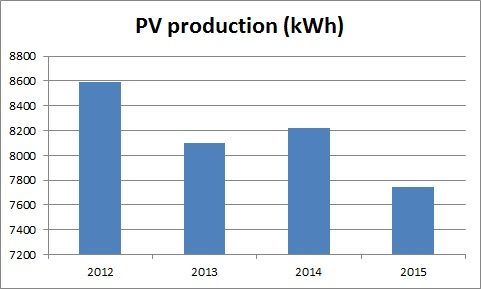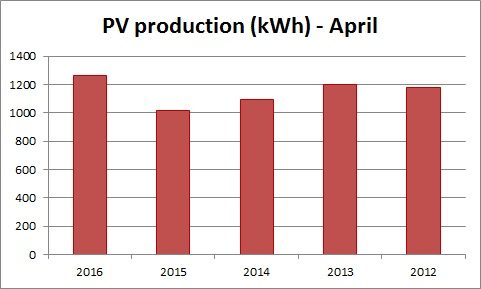Later this month, my husband Matt and I will celebrate our five-year anniversary in our new net-zero energy house. When we built the house we made a commitment to use it as an educational tool to showcase our successes and our “learning opportunities”. I feel like it’s appropriate to celebrate the anniversary with a little reminder that when it comes to operating an energy efficient home, the learning opportunities never end.
We just discovered that we DO need to have our solar panels cleaned. Our installer originally told us that cleaning was unlikely to be necessary and this made sense to us. After all, we live in a temperate rain forest and it’s rare to have a week go by when it doesn’t rain at least a little bit. It’s not like we have a “dry season” when they might get dusty.
How did we figure out that we were wrong? Well, the short story is that we check every year to see if we’ve achieved “net-zero energy” status. The first couple years we did, and then later we didn’t, despite making some other changes in the house that were saving energy. It was time to dig into the data, and this is what I found. Our solar PV was producing less each year until 2015 had about 10% less output than 2012.

I suspected that dirty panels might be the issue. To confirm this, I looked at our domestic hot water energy use. We have solar domestic hot water, so we use very little energy for backup heating and there’s a lot of “noise” in the data. But I noticed it had been creeping up too, so that by 2015 we were using nearly twice as much backup heating for hot water than we had used in 2012. It was still a minuscule portion of our total energy use, but it wasn’t tied to any noticeable change in our habits.
My next step was to call a couple of local installers and ask their opinion about why this might be happening and if they thought cleaning would help. Both of them were a little surprised, but said some version of, “In this climate panels should be self cleaning, but you can get local pollen conditions where you might benefit from cleaning.” There were some other possibilities why production might go down, but those were going to be somewhat expensive to troubleshoot. We decided to give cleaning a shot.
We hired a local window cleaning company to send a guy in a climbing harness up on the roof to clean the panels. He said that they had a sticky brown film on the surface that didn’t look likely to rinse off in the rain. Also, it had rained the day before he came. So we were hopeful.
The first week of data was actually kind of disappointing. I had been hoping to see production jump up right away. But short time periods have very noisy data, and April is known for having a lot of partly cloudy days. So I waited a month and compared the PV production for the month of April. Our 2016 (post cleaning) production was up a full 20% from the previous year and was actually higher than any year on record. So, I feel pretty confident that the panels needed to be cleaned.

Cleaning isn’t that expensive, and we’re making a commitment to having them cleaned once a year. We still have not decided whether it would be best to get them cleaned in the spring, just before the peak summer energy production season ramps up, or in the fall after the worst of the pollen is over. We may experiment with that to try to figure out whether the pollen from a certain season is “stickier” and causing the problem. It’s also possible that on hot summer days, pollen and other dust is just “baking on”.
What have we learned here? Rainy places tend to have pollen, so a lot of people probably need to have their solar panels cleaned. You have to pay attention to your electricity bills. There’s no substitute for digging into a nice set of data. And you have to renew your “net-zero” card every year. Hopefully this year we’ll get ours back.
Copyright 2016. Amy Musser

